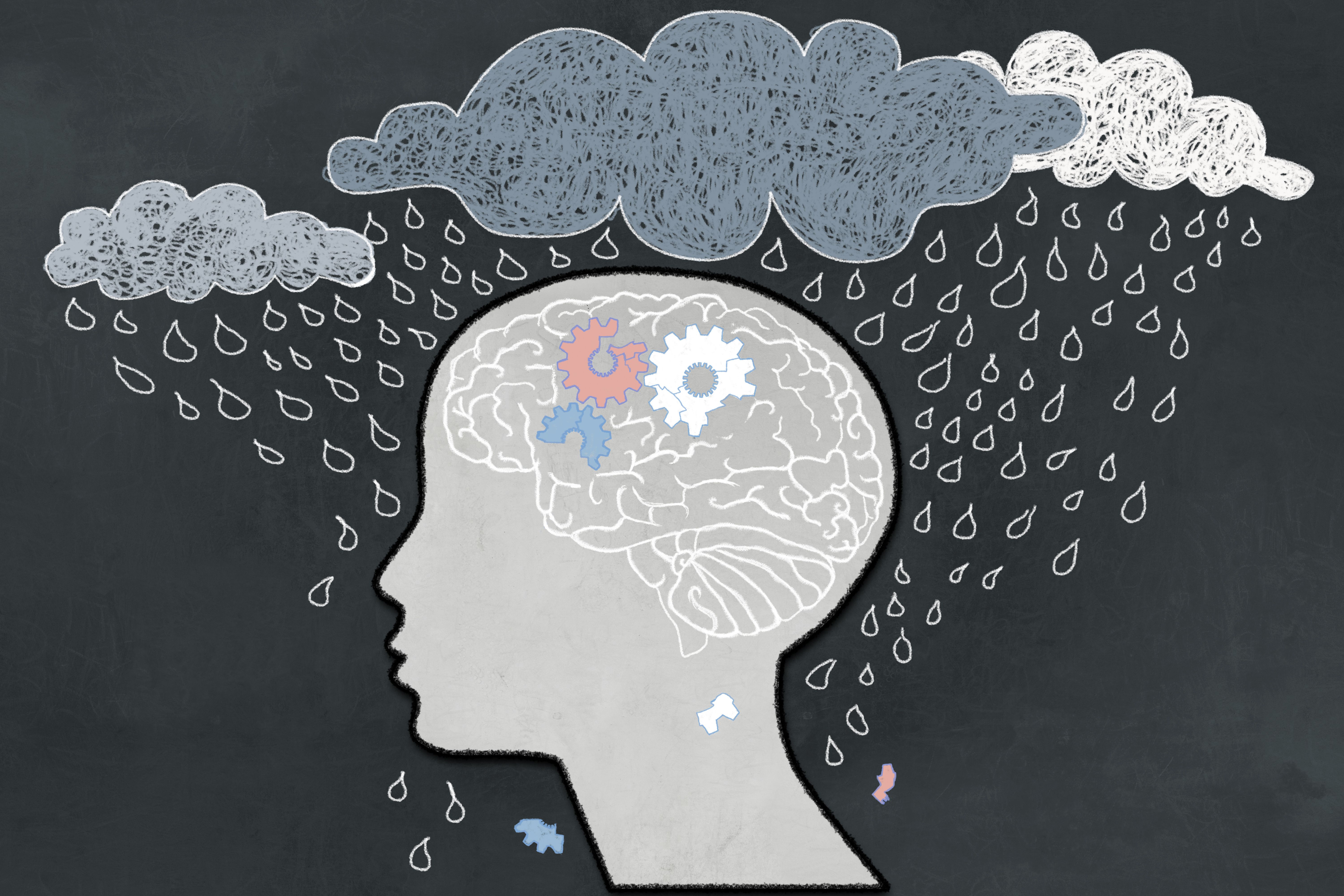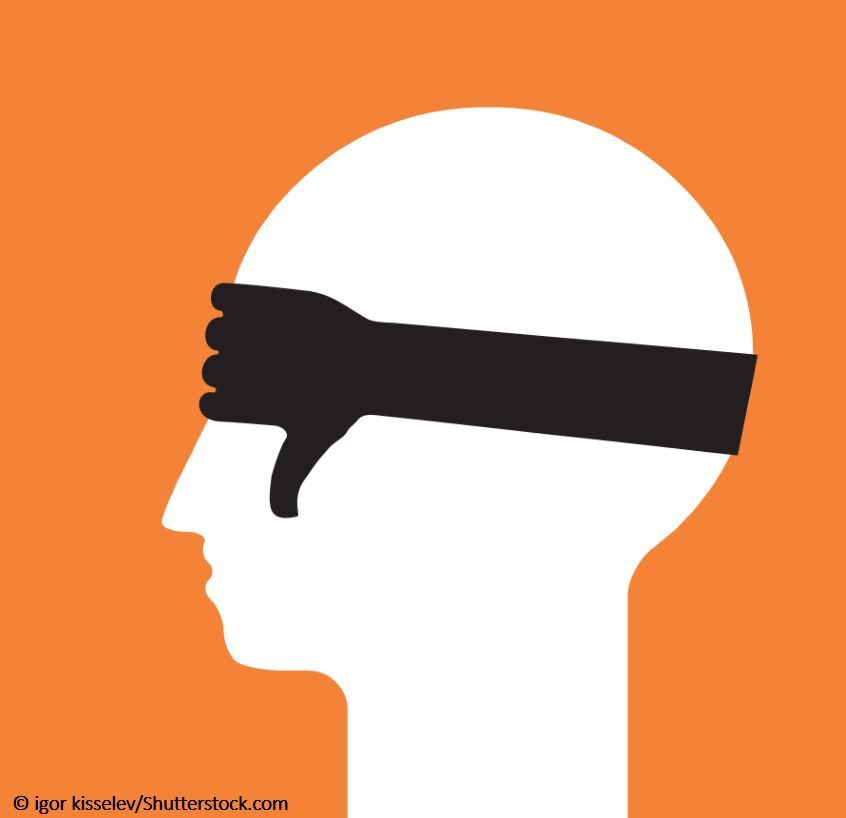Publication
Article
Psychiatric Times
DSM-5: What It Will Mean to Your Practice
Author(s):
Undoubtedly there will be problems with some of the additions to DSM-5, with some of the combinations, with some of the new nomenclature, and with some of the new criteria sets. But practitioners will find most of DSM-5 to be well considered and well written. It is unfortunate, however, that much of its nomenclature is out of sync with the rest of medicine.
Table 1
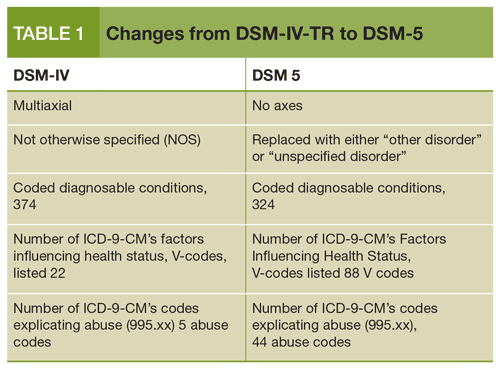
Table 2

Table 3
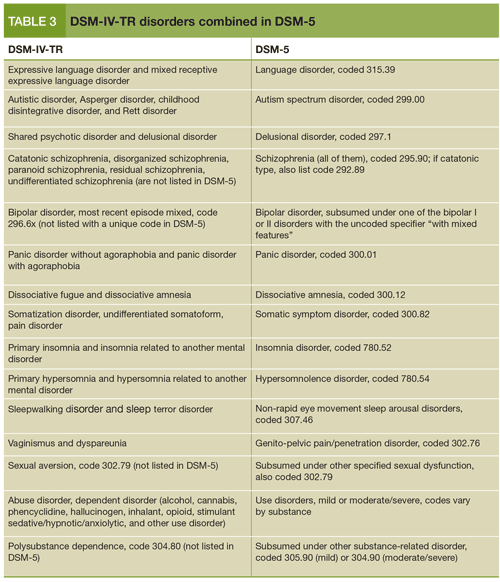
Table 4
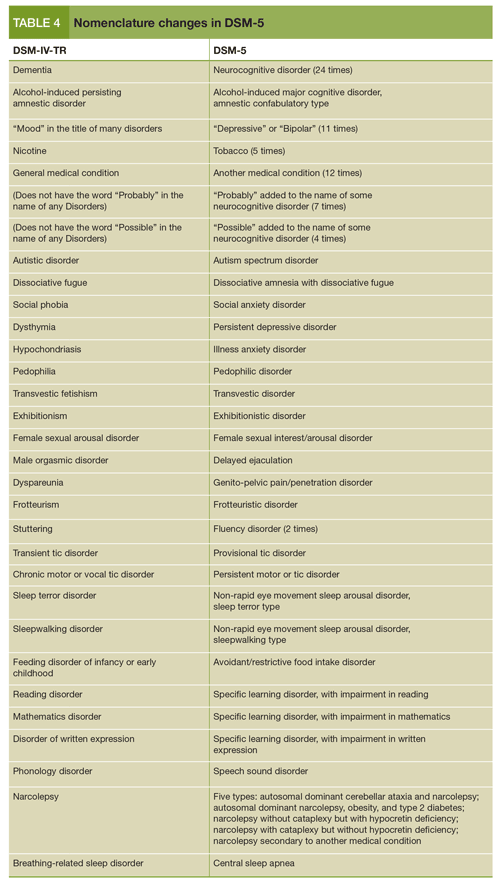
Despite the numerous changes, clinicians will not find DSM-5 to be unfamiliar because the new manual is another revision of recent DSMs. While some contributors suggested a “paradigm shift” during the development of DSM-5, by the time of its completion on December 2, 2012, the final product retained the style of the last 3 DSMs.
Many of the changes in DSM-5 are summarized in the Tables. Table 1 lists some of the changes from DSM-IV-TR to DSM-5, Table 2 lists the new disorders, Table 3 lists the DSM-IV-TR disorders that have been combined in DSM-5, and Table 4 lists nomenclature changes. In addition, there are about 464 differences between DSMIV and DSM-5 criteria-sets; the vast majority are very minor (eg, the word “individual” has been substituted for “person”). The title and criteria set are completely unchanged in only 10 DSM-IV-TR disorders: conduct disorder, kleptomania, pyromania, and 7 personality disorders-antisocial, avoidant, borderline, dependent, histrionic, narcissistic, and obsessive-compulsive. The changes we believe to be most relevant are reviewed in this article.
New disorders
Psychiatric Times readers have been thoroughly informed by the series of blogs by Allen Frances, MD, concerning the potential dangers that some of the new disorders introduced in DSM-5 may pose. With the release of DSM-5 in May, we should begin to find out whether the dire predictions about those disorders are correct.
Most of the new disorders are not controversial: DSM-IV-TR not otherwise specified entities have been replaced with the less confusing “other disorder” and “unspecified disorder” entities. “Other disorder” is used for syndromes that are not included in DSM-5 (eg, passive-aggressive personality disorder, zoophilia). Section III also includes conditions in need of further research, such as “Internet gaming disorder.” Unlike “other disorder,” “unspecified disorder” is used in cases that do not meet any specific syndrome.
Another group of new disorders, also not controversial, are the 10 “mild” forms of each of the “neurocognitive disorders” (the new term for what was previously dementia). These changes should help focus psychiatry on prevention by providing a name and a code that clinicians can use in the early stages of a neurocognitive disorder.
Combining disorders
There was a concerted effort to simplify DSM by combining disorders when nothing was clinically lost by such a combination. Changing to the combined diagnosis should go smoothly and be easy to explain to patients; however, if problems occur, the clinician may continue using DSM-IV-TR terminology and code. Removing a disorder in DSM does not remove it from the rest of medicine. For example, if a patient with a diagnosis of Asperger’s prefers that label, it and its name and codes (299.8 [ICD-9-CM] and F84.5 [ICD-10-CM]) can still be used.
Coding. What new codes does DSM-5 bring to clinical practice? None. What about ICD-10-CM coding, which is to begin October 1, 2014? Fortunately, DSM-5 provides the ICD-10-CM codes for all of the DSM-5 disorders. All DSM-5 coding is within the ICD-9-CM system that the rest of medicine uses. All of the disorders listed in Tables 2, 3,and4 have ICD-9-CM codes. All new entities share codes already existing within the ICD-9-CM system (eg, excoriation disorder shares code 698.4 with dermatitis factitia; caf-feine withdrawal and cannabis withdrawal share code 292.0 with 8 other disorders, and so forth).
The reason for the use of identical numbers for multiple entities is that DSM-5 must use only those codes already listed in ICD 9-CM and could not add new numbers. As a result, for example, 292.89 is the number used to code for 31 different DSM-5 substance-related disorders.
Nomenclature
DSM-5 introduces many new names for disorders, such as genito-pelvic pain/penetration disorder for dyspareunia. The National Center for Health Statistics (NCHS) is the agency that authors the ICD-9-CM and ICD-10-CM. Usually the NCHS welcomes proposed changes each winter and announces its decisions in the summer with an implementation date of October 1. To facilitate the change from ICD-9-CM to ICD-10-CM, however, a moratorium has been placed on changes this year and in 2014. Thus, it appears that the soonest changes will be considered is 2015. No DSM-5 changes appear in ICD-9-CM. We cannot state with certainty which of DSM-5’s new names will eventually appear in ICD-10-CM-and when.
The names selected for DSM-5 continue the style of DSM-III in using common English words to identify a disorder. One reason for using common English terms is to remove barriers to its acceptance by patients. For example, it was suggested to the Substance-Related Disorders group that “alcoholism” be used rather than “alcohol use disorder.” The suggestion was emphatically rejected, because “alcoholism” was seen as a barrier to the patient admitting that he or she had a problem with alcohol.
Heavy emphasis is placed on the word “disorder.” While other medical specialties do not require a definition of “disorder,” the use of non-medical terms requires that psychiatry define “disorder.” The definitions tend to be wordy (DSM-III: 110 words; DSM-III-R, 143 words; DSM-IV, 150 words; DSM-5, 111 words), but all essential ones come down to “clinically significant distress or impairment.” The focus on “clinically significant” gives the practitioner leeway to decide if the person does or does not have a disorder.
Criteria sets
As noted, the vast majority of changes in DSM-5 criteria sets are very mi-nor. After review, a clinician will rarely conclude that a DSM-IV-TR diagnosis needs to be changed because of a criteria set change in DSM-5.
Multiaxial system
The most sweeping change in DSM-5 is elimination of the multiaxial system. This controversial change brings psychiatry into parity with the rest of medicine, because other specialties prioritize clinically relevant findings without using an axial distribution. The multiaxial system had the unfortunate history in American psychiatry of being used to deny treatment in some (eg, when the patient was placed only on Axis II or was given a high score on Axis V).
Axis V has been especially problematic. It dimensionalized the patient, not the disorder, as to severity, function, and dangerousness to self or others. The system expected the practitioner to select the lowest score of the 3 dimensions for Axis V. Thus, a patient with very disabling Alzheimer disease could receive the same “05” rating on Axis V as another patient with good functioning but who is frequently dangerous to others (eg, Tony Soprano).
It will take a while for third-party payers to cease demanding the multiaxial system, but DSM-5 provides clinicians with a resource to push back. Some will say that insurance companies will find another tool to burden mental health clinicians. However, insurers would appear to be in blatant violation of parity regulations if they do not require what they demand of psychiatrists from clinicians in other specialties who make diagnoses of ADHD, PTSD, and so forth.
One of the controversies surrounding the development of DSM-5 was the placement of severity scales within the diagnostic system. Advocates for increasing the variety of severity codes pointed to the fact that pathology, such as blood pressure, is on a continuum. Severity scales have been part of medicine forever; however, this is not the same as saying that medicine welcomes severity scales as part of the diagnostic system. Blood pressure highlights the reason not to pursue dimensional diagnosing. There are about 140 medical diagnoses of “hypertension” in ICD-9-CM. Almost all are etiologically based, not dimensionally based. Etiologically based diagnoses remain the goal in medicine-including psychiatry.
Another aspect of the multiaxial system, Axis IV, was designed to capture psychosocial and environmental problems. With Axis IV gone, the ICD-9-CM V-codes “Factors Influencing Health Status” have a greater emphasis. DSM-5 adopted from ICD-9-CM 4 times as many V-codes and 9 times as many abuse codes (995.xx) as did DSM-IV-TR IV. Furthermore, DSM-5’s text has a marvelous review of cultural factors, and a Cultural Formulation Interview that should enable clinicians to clearly explicate cultural issues.
Living document
There were nearly 2 decades between DSM-IV and DSM-5. It is hoped that DSM-5 will be a living document. That expectation implies that changes will be made fluidly, when indicated. In that spirit, it has been proposed that the title of the next DSM be DSM-5.1 (the wish for decimals led the change from Roman numerals to Arabic).
Each of the changes listed in Table 1 is easily digested, but a massive number of changes at once might prove beyond anyone’s capacity to immediately absorb and incorporate into clinical practices. A proposal has been made that there be a new DSM each year. Foolhardy as that may seem, annual updates would bring psychiatry in step with the rest of medicine’s annual ICD changes. Annual reviews generally mean only a few changes each year, which facilitates the task of clinicians to be current with nosological advancements. More important, having changes synchronized with the rest of medicine reduces confusion in dealing with other medical specialists and makes psychiatry appear less idiosyncratic.
Undoubtedly there will be problems with some of the additions to DSM-5, with some of the combinations, with some of the new nomenclature, and with some of the new criteria sets. But practitioners will find most of DSM-5 to be well considered and well written. It is unfortunate, however, that much of its nomenclature is out of sync with the rest of medicine. That can be avoided in the future with a living DSM in which changes are made at exactly the same time those changes are being made in the rest of medicine.
Disclosures:
Dr Peele was a member of the DSM-III Work Groups, a member of the DSM-III-R Task Force, a member of the DSM-IV Task Force, and a member of the DSM-5 Task Force. His e-mail address is RogerPeele@aol.com. Dr Goldstein is a child and adult psychiatrist who has given talks on how DSM-5 relates to diagnoses in children and adolescents. Dr Crowel is a psychologist who has directed a number of psychiatric programs in Maryland and Washington, DC. The authors report no conflicts of interest concerning the subject matter of this article.



